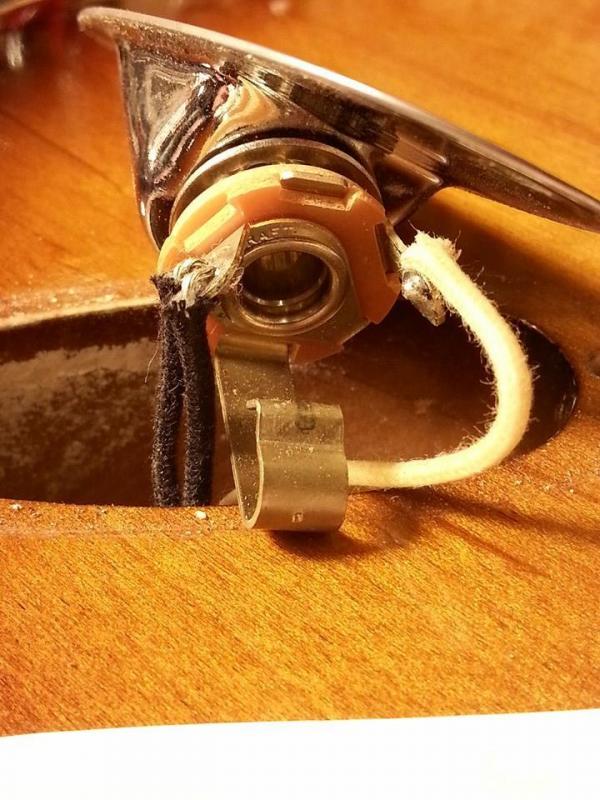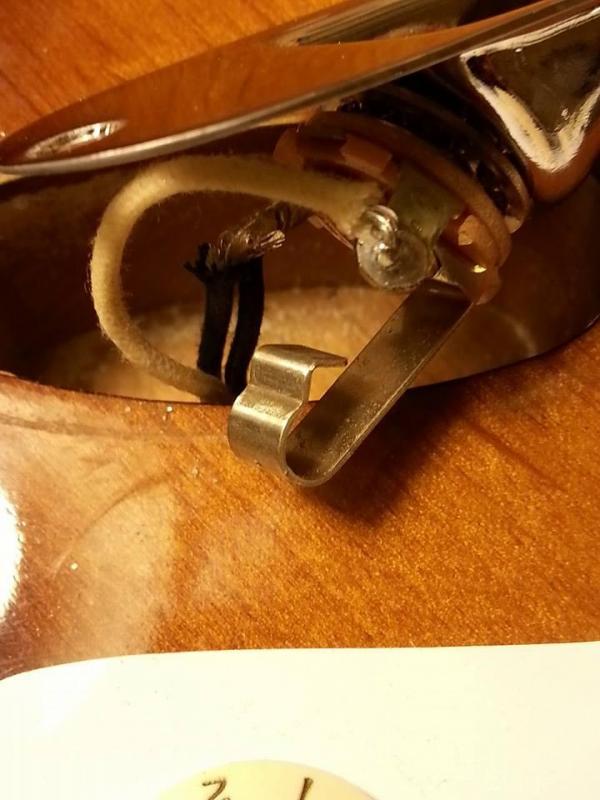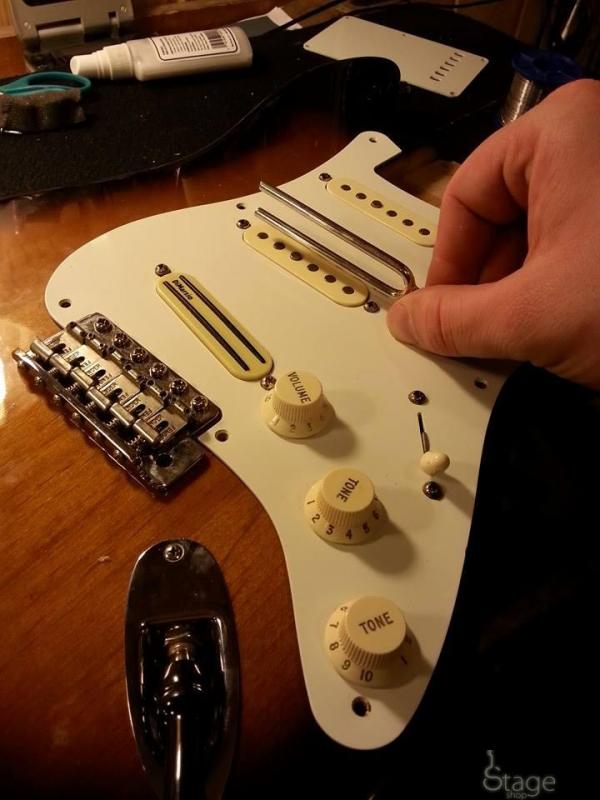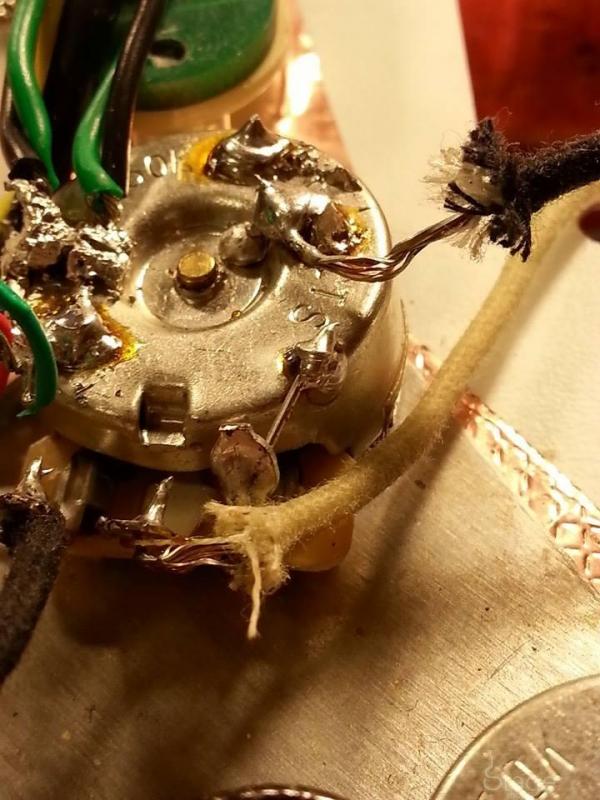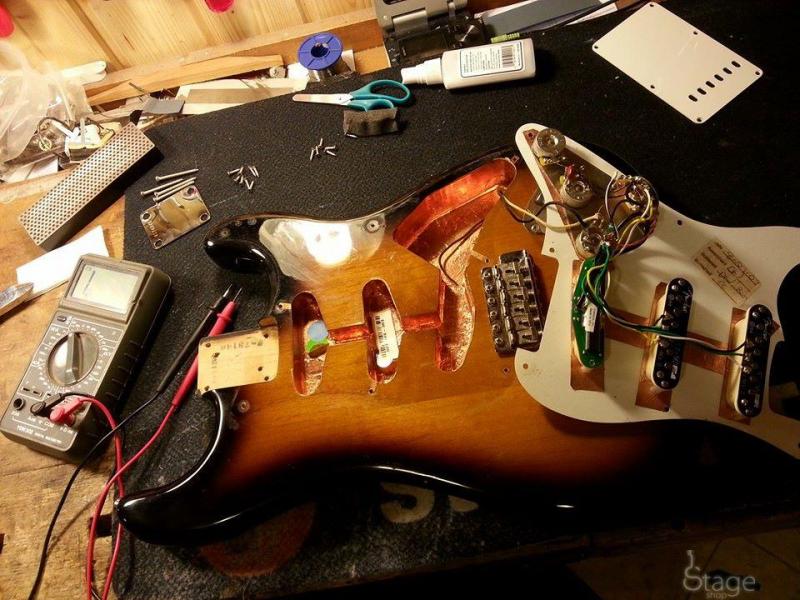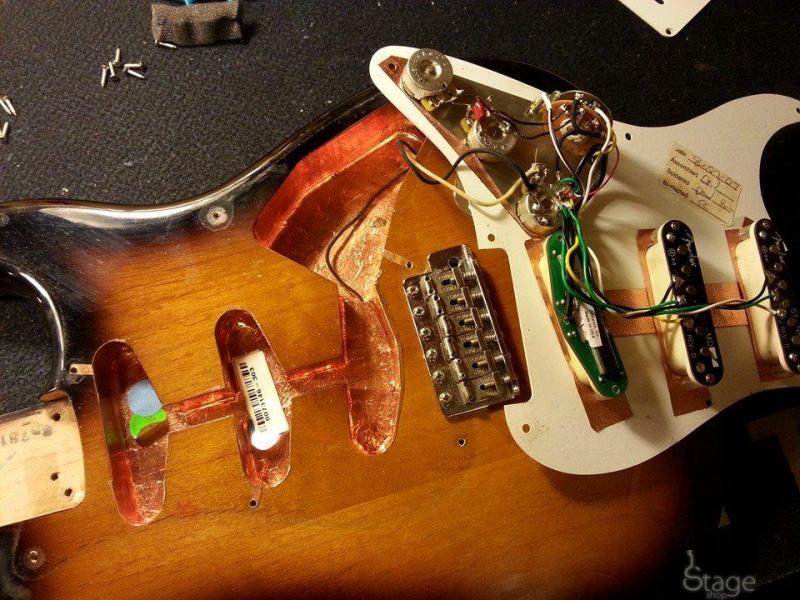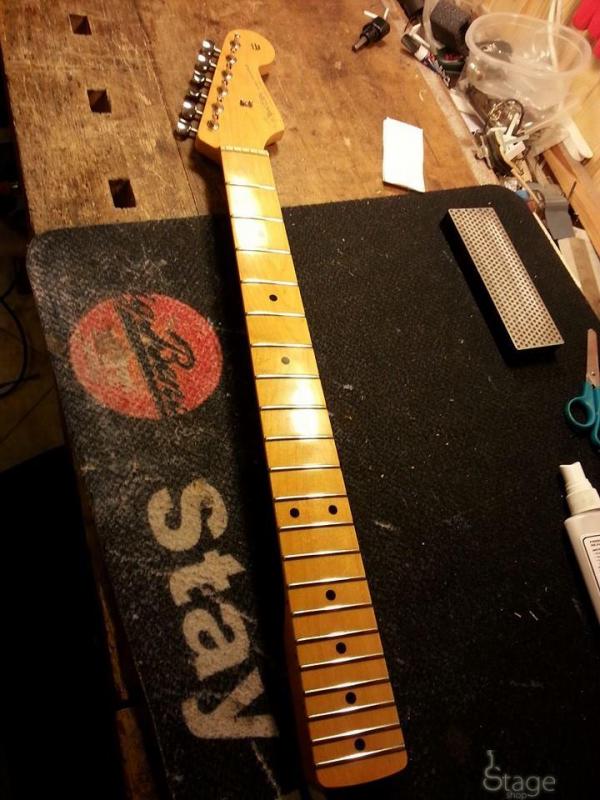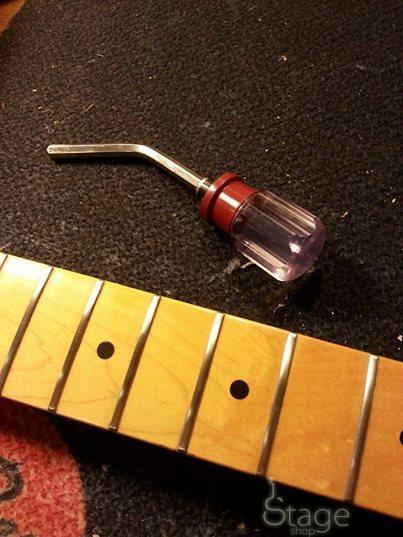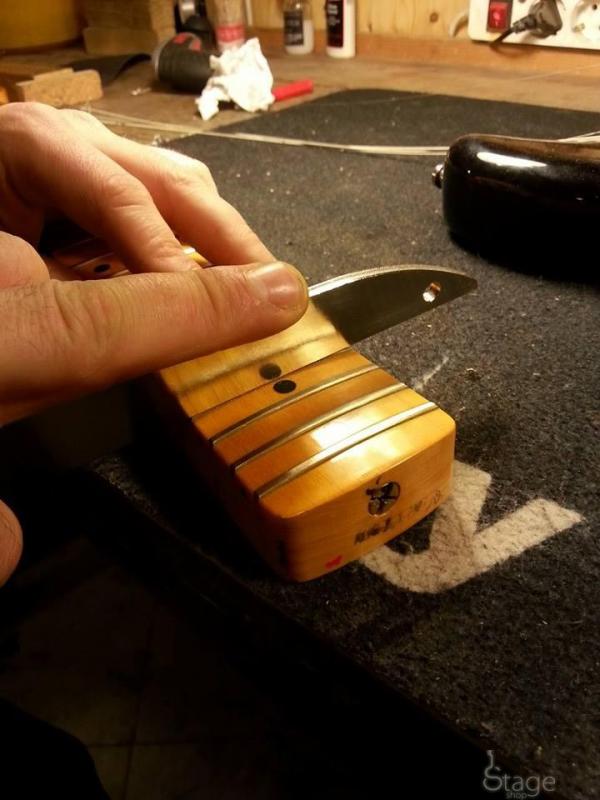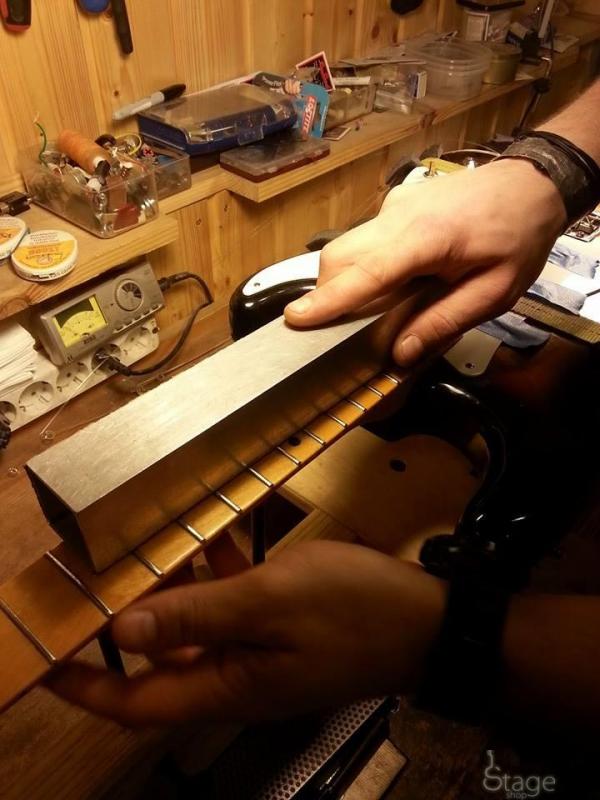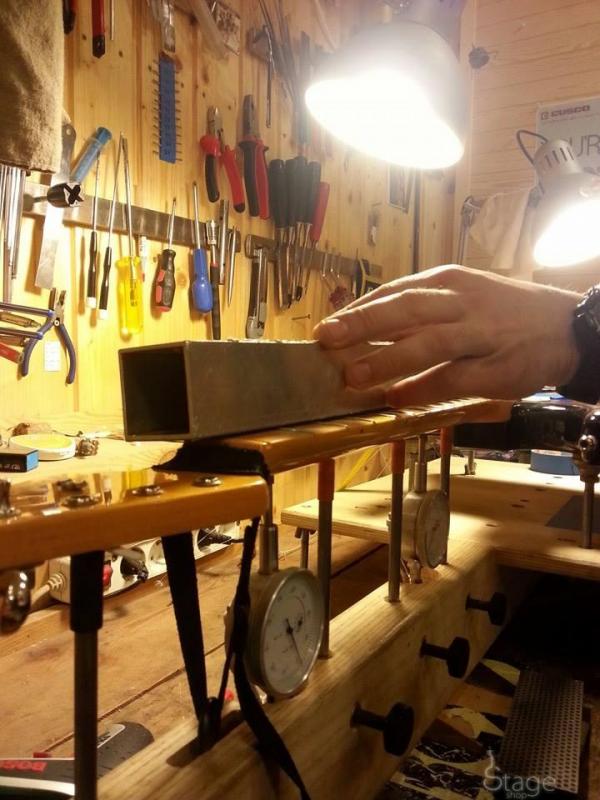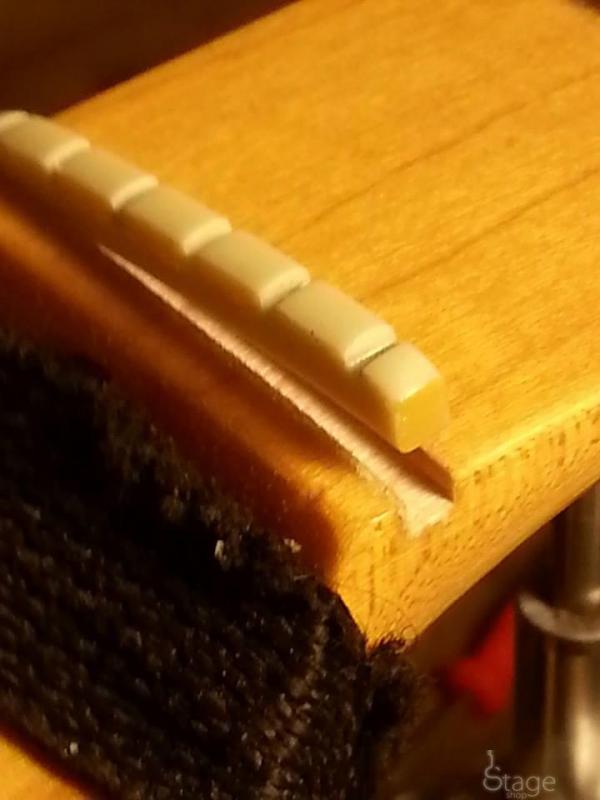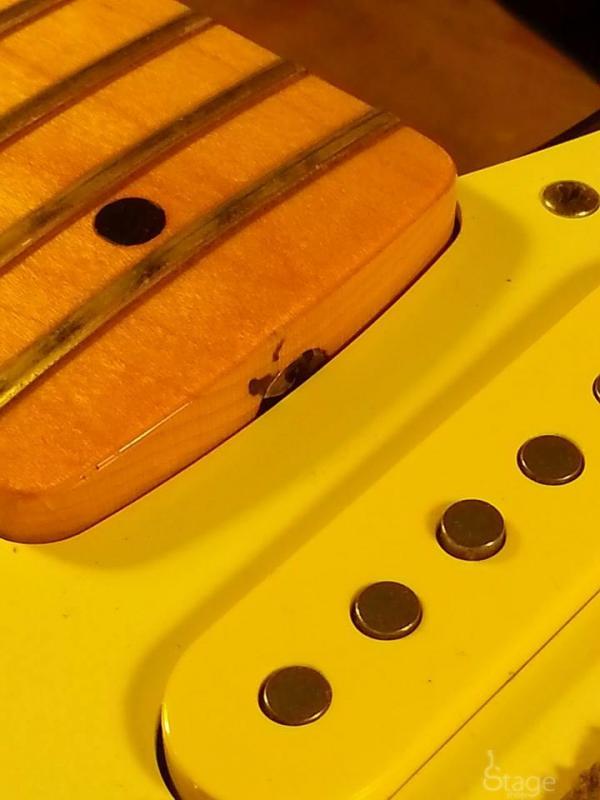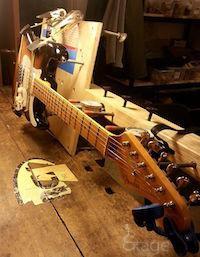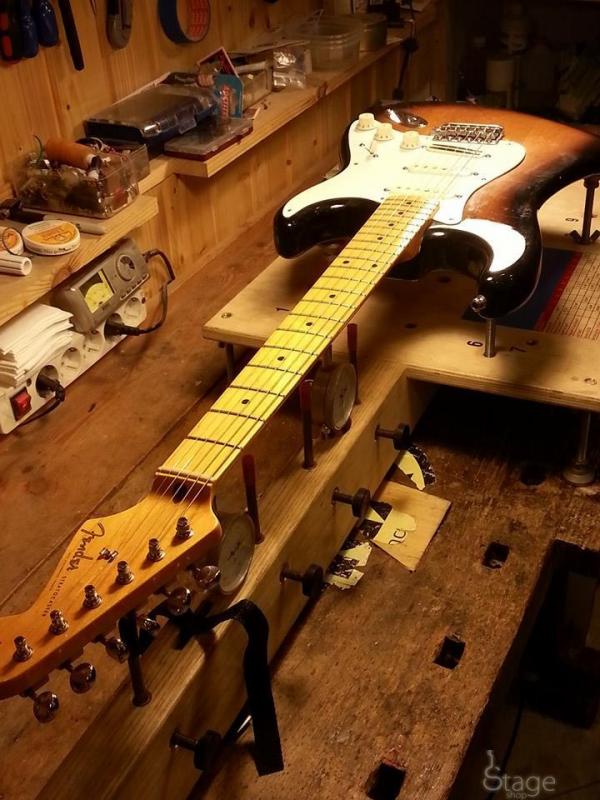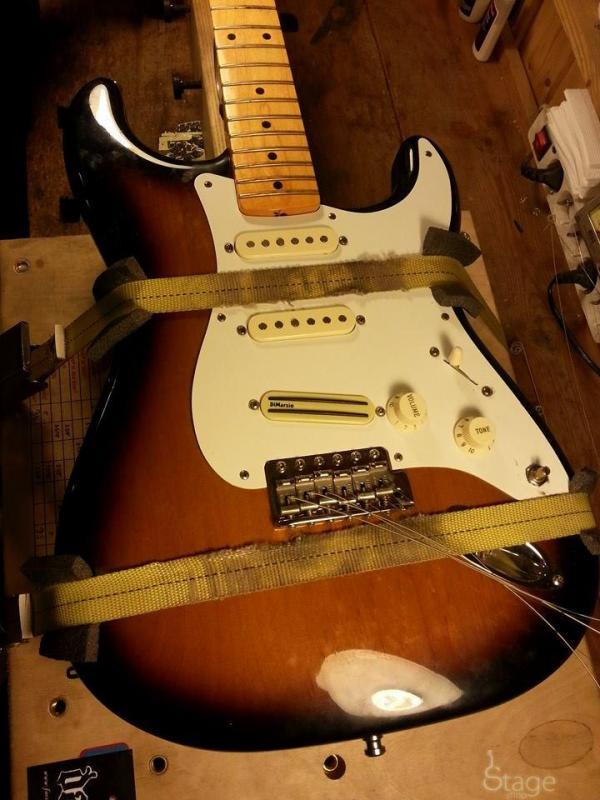Let’s grab the neck jig. With this I can put the appropriate string tension on the neck without actually having strings on. There are striking differences between a neck with and without the tension of the strings. As seen in the second picture, the set up is done at an angle that mimics the playing position of the while guitar. It is unbelievable, but even gravity’s angle impacts the neck as compared to just laying flat.
The guitar is secured with straps to not move and the neck is supported in multiple points to ensure nothing bends as the fret file lays on. Pickups are screwed in to be out of the way. The nut and a few of the tuning keys are removed.
For the filing, we use a perfect aluminum profile (or, actually, two). One reaches through the entire fretboard. The other is around 30 cm (12 inches) long. In this phase it is absolutely critical to consider the radius of the fingerboard. Classic no radius or modern compound radius fretboards that become more flat towards the higher notes are filed differently.
Here we are faced with a relatively high, 7.25” radius that is super comfortable for chords, especially bar chords. On the other hand, in higher fret positions notes often go dead during string bends unless the action is set uncomfortably high.
After checking with the owner, we agreed that above the octave I should file the top of the frets slightly flatter under the g and b strings making the neck feel slightly more like a hybrid radius fretboard with all its advantages and without a modification to the fretboard.
Next step is the profiling that takes place in multiple steps from the course fret file to the fine 1000 grade sandpaper. After this, the frets can be polished to a mirror.
